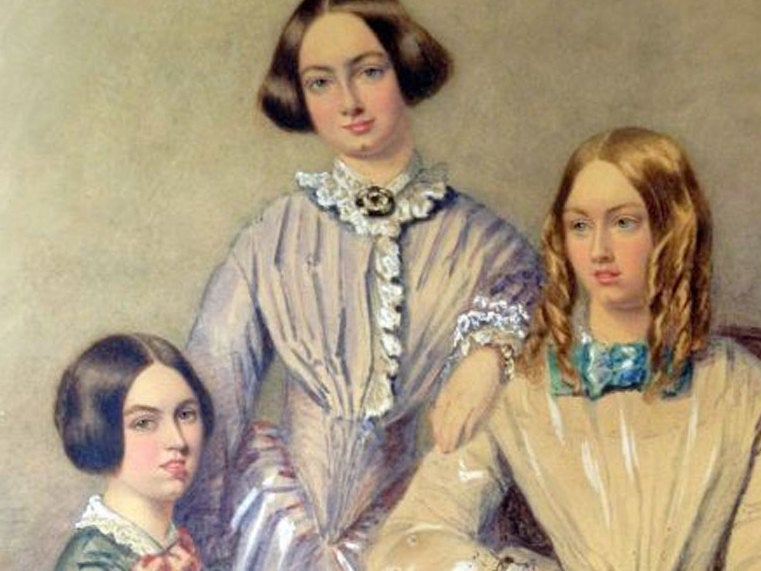The Bronte Cabinet: Three Lives in Nine Objects by Deborah Lutz; book review

Your support helps us to tell the story
From reproductive rights to climate change to Big Tech, The Independent is on the ground when the story is developing. Whether it's investigating the financials of Elon Musk's pro-Trump PAC or producing our latest documentary, 'The A Word', which shines a light on the American women fighting for reproductive rights, we know how important it is to parse out the facts from the messaging.
At such a critical moment in US history, we need reporters on the ground. Your donation allows us to keep sending journalists to speak to both sides of the story.
The Independent is trusted by Americans across the entire political spectrum. And unlike many other quality news outlets, we choose not to lock Americans out of our reporting and analysis with paywalls. We believe quality journalism should be available to everyone, paid for by those who can afford it.
Your support makes all the difference.Exploring famous lives through objects is the latest fashion in biography. “Material culture” or “thing theory” has become the new formula used to enliven well-worn biographical snippets. At its worst this genre is less satisfying than a full biography and brings little new to existing scholarship. However, at its best, as in Deborah Lutz’s The Bronte Cabinet: Three Lives in Nine Objects it can provide a fresh and enlightening insight.
In Lutz’s version of Howarth Revisited we become engulfed in the gloomy gothic atmosphere and get a real feel of what it was like to live in the world of Charlotte, Emily and Anne Bronte. The banality of domestic chores ran parallel to their extraordinary imaginative lives. The image of Emily putting down her iron to jot down an extract of Wuthering Heights on a scrap of paper, or of Charlotte dripping ink from her pen onto her portable writing desk in her fervour to write Jane Eyre are unforgettable pictures. This book is an exceptionally intimate study of the three sisters, through it we look into the most private corners of the parsonage. In Charlotte’s sewing box snipped off finger ends of kid gloves jostle with a piece of whalebone stay and a pair of black silk cuffs. In Anne’s box pebbles collected on the beaches at Scarborough when she was a governess still remain.
After setting the objects in the Brontes’ biographical context Lutz then explores how similar items appeared in their novels. Her knowledge of their writing is comprehensive and like the Brontes’ carefully crafted needlework (which is examined in detail), she seamlessly stitches extracts from their fiction and poetry into the text. Each item is then set in the wider context of Victorian culture. Through the blackthorn walking stick used by Emily when she needed to free her body and mind by walking on the moors, Lutz explores how the Brontes drew on the Romantic poets Wordsworth’s and Coleridge’s ideas of walking in remote landscapes as part of the aesthetic education of writers. Haworth locals became used to the eccentric Bronte girls striding out in their unfeminine heavy boots. However, as Jane Eyre’s experience shows a woman walking alone could be viewed with suspicion. It could be seen as a personal rebellion against society’s conventions. A solitary female walker was associated with sexual looseness, hence the term “streetwalker.”
Emily’s dog Keeper’s brass collar provides the starting point for one of the most original sections of the book. Unlike many Victorians who sentimentalised their pets, Emily was drawn to fierce creatures with wild, unyielding natures. She relished Keeper’s ferocity but forcefully established her dominance over him. Reserved with humans, she was more emotional with her bull mastiff. One acquaintance said that Emily “never showed regard to any human creature; all her love was reserved for animals.” Lutz suggests that in Wuthering Heights Emily challenged the settled boundaries between humans and animals. The novel portrays a savage world and Heathcliff’s brutality reminds us of our ties to animals; the difference between him and the dogs which weave in and out of the story is small.
The most poignant item in the “cabinet” is the amethyst bracelet made from the entwined hair of Emily and Anne. After her two sisters died within a few months of each other in 1848-49, Lutz suggests that Charlotte probably wore this bracelet to carry on a physical link with her sisters, as if to touch them wherever they were. Hair in lockets appears in Charlotte and Emily’s novels as a sign of everlasting bonds. Mourning jewellery made from hair became fashionable in the Victorian era. Some people thought hair had an animal magnetism, an invisible fluid which permeated the world allowing bodies and objects to interact even when far apart.
Faultlessly researched and evocatively written, In Lutz’s book the delight is in the detail. She uses material often discarded as not relevant to the main plot by conventional cradle to grave biographers to create a different, more physical recreation of the Brontes’ lives. It is a particularly appropriate genre for Victorians who believed that material remnants could maintain a connection between the living and the dead.
Join our commenting forum
Join thought-provoking conversations, follow other Independent readers and see their replies
Comments